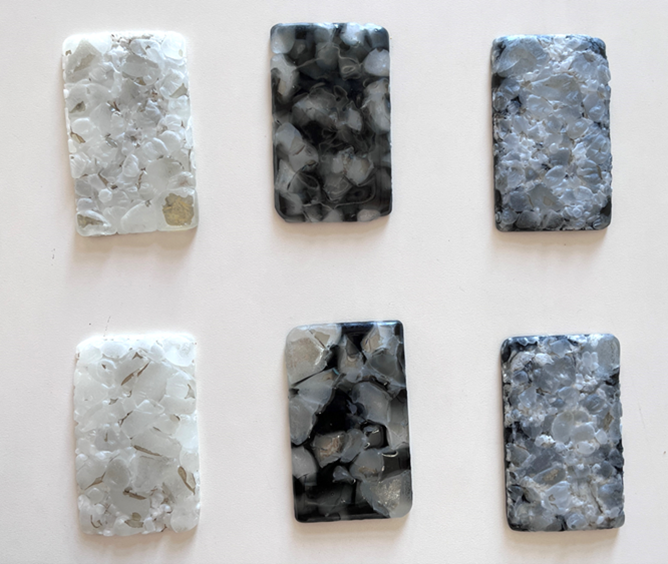Re-Glass: Product Development Pathways for Post-Consumer Glass
DOI:
https://doi.org/10.47982/cgc.9.649Downloads

Abstract
Our research examines the viability of recycling soda lime glass from post-consumer Insulated Glass Units (IGU), mixing various types of architectural glass cullet and fusing them into flat plates by using electric kilns. Those kilns operate at lower temperatures than standard float glass production, which significantly reduces manufacturing emissions. The research outcomes suggest the potential for near-site operations, reducing transportation logistics, costs, and emissions. Strength and emissivity tests were performed on the recycled glass samples, to assess challenges arising from various production parameters including: glass types, processing methods, annealing temperatures and schedules, cullet sizes and distribution. These explorations offer high-level perspectives for developing post-consumer glass solutions driven by emissions and logistics primarily, and tectonics secondarily, exploring the cost-effective diversion of glass products from landfill to generate solutions staying within the built environment. The research examines performance aspects of recycled glass as emblematic of sustainability in design and underscores the role (and implications) of texture in architectural materiality. Performance and viability are weighted with considerations for the US market (hauling distances, energy grid emissivity across states, market culture, labor rates, incentives, or lack thereof). This exploration proposes innovative avenues for integrating distinctive, sustainable recycled glass as a hallmark into architectural frameworks.
Published
Issue
Section
Circularity & Sustainable Solutions
License
Copyright (c) 2024 Sophie Pennetier, Baizhen (Shirley) Yu

This work is licensed under a Creative Commons Attribution 4.0 International License.



